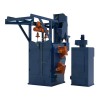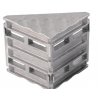What are special investment zones?
They are special zones designated by the Chinese government over the past 20 years, and are mostly located in southern China or along the coastline. They were created to encourage foreign investment, bring in advanced foreign technology, and offer platforms for export.
These zones attract foreign investment by offering foreign investors various incentives, in addition to those already offered to foreign investors setting up projects in any part of China. These additional incentives include national tax reductions, tax holidays, local tax reductions, and other concessions offered by local governments.
What are the types of zones? Where are they located?
There is a myriad of different types of zones. The major ones are Special Economic Zones ('SEZs'), Economic and Technological Development Zones ('ETDZs'), the Coastal Economic Open Zone ('CEOZ'), Old Urban Districts of cities where SEZ/ETDZ are located ('OUDs'), and New Areas ('NAs'). The minor ones include Industrial Parks, Industrial Zones, Development Zones and Bonded Zones.
SEZs: these are located in Shenzhen, Zhuhai, Shantou, Xiamen and Hainan Island. SEZs were the first special investment zones to be created, and they usually enjoy more economic freedom than other special zones.
ETDZs: There areis a large number of these in China, such as Guangzhou ETDZ, Zhanjiang ETDZ and Nansha ETDZ. The focus is on developing hi-tech industrial production, and bringing in advanced technology. They are usually located a short distance from the major city centers, offering an abundant supply of land for setting up new operations and for later expansion. They usually offer superior infrastructure and access to facilities.
NAs: These are discrete areas especially designated by the Central Government, such as the Shanghai Pudong NA.
CEOZ: This covers a large area along the southern coastline of China. Local authorities may approve foreign investment up to a higher amount. They may also approve foreign exchange and foreign currency loans up to a higher level.
Bonded Zones: These are usually micro-areas located within the larger development zones, where tariff-free entrepot trade can be conducted.
How are these zones different from each other?
Generally speaking, the most favourable conditions are offered by the SEZs, ETDZs, and NAs. Second-tier benefits are provided by the other special investment zones.
There may be differences even between the same type of zone. For instance, some SEZs offer more advantageous tax preferences to overseas Chinese/Taiwanese investors, or set aside areas specifically for them. In Shantou SEZ, such investors enjoy a 3-year tax holiday, followed by a 50% tax reduction for another 4 years, and then a 20% reduction of the regular rate. In Zhuhai SEZ, such investors enjoy a 5-year local tax exemption starting from the first profit-making year.
What benefits are available to investors in these zones?
The major benefits relate to taxation. In China, every resident enterprise has to pay 3 major types of tax: National Income Tax, Local Income Tax, and Turnover Tax. A resident enterprise pays income taxes on its worldwide income. A non-resident pays Withholding Tax on its China-sourced income.
A foreign enterprise may be a Chinese resident by being either a Foreign Investment Enterprise ('FIE', with its head office in China), or a Foreign Enterprise with establishment in China ('resident FE', with its head office elsewhere). More benefits are offered to FIEs than to FEs.
A foreign enterprise may be a Chinese non-resident by being an FE without establishment in China ('non-resident FE').
National Income Tax
The standard tax rate for any resident enterprise is 30%. However, special rates are offered to FIEs and/or FEs in the special investment zones. In SEZs, FIEs and resident FEs are only taxed at 15%. In ETDZs and NAs, production FIEs are only taxed at 15%. In the CEOZ and OUDs, production FIEs pay only 24%; and if the investment relates to technology-intensive projects, infrastructure projects, or has a long investment return period with more than US$30m foreign investment, the rate is further reduced to 15%.
In any part of China, a production FIE which exports at least 70% or more of its output (by value) enjoys a discounted National Income Tax rate of 15%. In SEZs, ETDZs and NAs, this rate is reduced to 10%. In the CEOZ and OUDs, the rate is 12%; and if the investment relates to technology-intensive projects, infrastructure projects, or has a long investment return period with more than US$30m foreign investment, it is further reduced to 10%.
In the SEZs, financial institutions (eg foreign bank branches, Sino-foreign joint-venture banks) with a registered capital from the foreign investor or an operation fund transferred from the foreign head office of more than US$10m, and an operation period of more than 10 years, is only subject to National Income Tax of 15%. However, this only applies to the foreign currency business of the institution, not the Renminbi business.
Tax Holiday
In any part of China, FIEs may enjoy the following Tax Holidays on National Income Tax:
Production FIEs operating for more than 10 years get a 2-year tax exemption starting from the first profit-making year, followed by a 3-year 50% tax rate reduction. FIEs not engaging in productions must be in one of the priority fields (provided in local regulations) to benefit from this.
After this 5-year period, 'technologically advanced' FIEs in all areas in China may pay National Income Tax at a 50% reduced rate for another 3 years subject to a minimum effective rate of 10%. This means: 10% in SEZs, ETDZs and NAs; 12% in the CEOZ and OUDs, and 15% elsewhere. The status of being a 'technologically advanced' FIE requires special certification by the local government.
SEZs offer additional benefits:
1. FIEs located in SEZs engaging in service industries, with more than US$5m foreign investment, and an operation period of more than 10 years, may enjoy a 1-year tax exemption starting from the first profit-making year and a 2-year 50% tax reduction. However, approval of the SEZ tax bureau is required.
2. Financial institutions with a registered capital from the foreign investor or an operation fund transferred from the foreign head office of more than US$10m, and an operation period of more than 10 years, may enjoy 1-year tax exemption starting from the first profit-making year. However, this only applies to the foreign currency business of the institution, not the Renminbi business.
Local Income Tax
The standard rate is 3%. In the special investment zones, the rate may be reduced at the discretion of the local authority, sometimes to 0%. The length of reduction also depends on the local authority. In addition, Local Income Tax Holidays are granted in many zones in relation to technologically advanced or export-oriented projects.
Turnover Tax
This is an indirect tax charged on the gross turnover of a resident enterprise. It consists of 3 taxes: Value-added Tax ('VAT'), Business Tax ('BT'), and Consumption Tax ('CT').
A resident enterprise pays either VAT or BT, depending on the nature of its business. VAT is charged on businesses of a production or repair nature: 17% on local productions and imports, 13% on certain specific products (mostly necessities), and exports are exempted. BT is charged on businesses in the services, transport or other non-production industries, and on the transfer of intangible assets and real properties. It ranges from 3% - 20%.
CT is charged on production in China or import of 11 types of goods (eg cigarettes and alcohol).
A resident FIE or FE may pay only reduced or no Turnover Tax, depending on the discretion of the local authority. In addition, it may deduct any BT and CT paid when calculating income tax.
Other benefits offered by Local Authorities to FIEs and resident FEs
Other benefits may be offered at the discretion of local authorities, in areas such as depreciation policies, land-use rights, and one-off/annual land-use fees. For instance, in Shenzhen SEZ and Shantou SEZ, land-use rights usually run up to 50 years, while in Hainan SEZ and Xiamen SEZ they usually last 70 years. Land-use fees may vary depending on the intended land-use, and these are negotiable. In most of the cases, the foreign investor can pay in advance for the entire duration of the investment, and discounts may be available. The local authorities may also charge lower annual land-use fees during the construction period.
Withholding Tax
Non-resident FEs are subject to a standard rate of 20% withholding tax on their China-sourced gross income, or the amount of gain in the disposal of buildings or the transfer of land-use. Such 'gross income' may include dividends, interest, rental and royalties.
In addition to the various benefits available to certain non-resident FEs in any part of China, more advantageous terms are available to non-resident FEs in SEZs, ETDZs, NAs and the CEOZ. The rate of withholding tax sourced in these areas is reduced to 10%. In addition, if the terms are favourable and the technology transferred is advanced, royalties may even be exempted.






